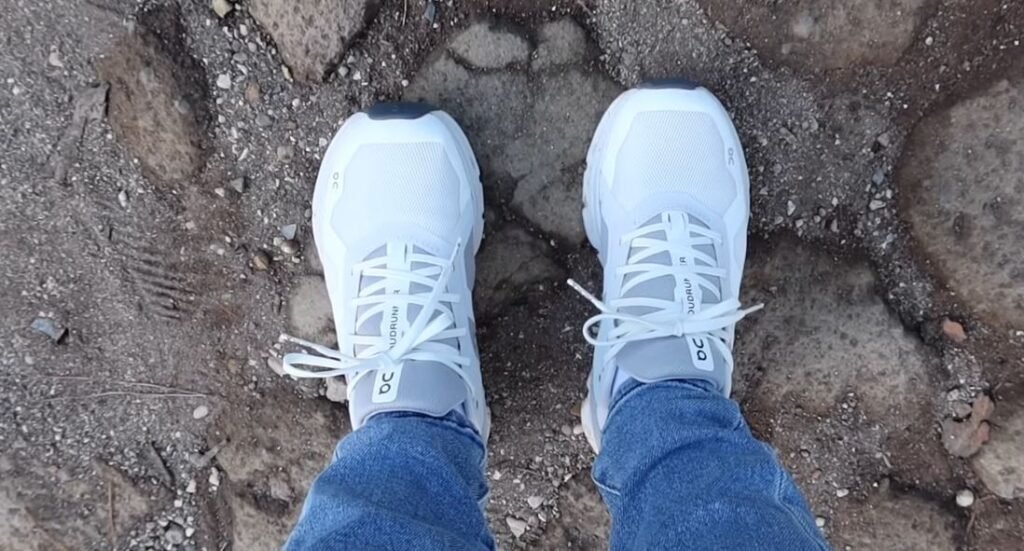Can you wear sandals in churches in Italy? Yes, you can wear sandals in many churches in Italy, but they should be modest and respectful. Avoid casual flip-flops or beach sandals. Opt for more formal sandals, such as leather or closed-toe styles, especially when visiting significant churches like St. Peter’s Basilica or the Duomo di Milano.
When planning a trip to Italy, many travelers find themselves asking practical questions about local customs, especially when it comes to visiting sacred sites. One question that often arises is: Should you wear sandals in churches in Italy? It’s a valid concern, especially considering Italy’s rich history and the significant role that churches and religious sites play in the country’s cultural and historical landscape.
In this article, we’ll explore the etiquette and dress code for visitors to churches in Italy, focusing on whether sandals are appropriate attire. Whether you’re visiting the iconic St. Peter’s Basilica in Vatican City or a small local church in Tuscany, understanding the expectations surrounding dress code will help ensure that your visit is respectful and memorable.
Why Is the Dress Code Important in Italian Churches?

Italian churches, especially the more renowned ones, are not just places of worship—they are cultural and historical landmarks. Many of these churches have centuries-old traditions and have played pivotal roles in shaping Italy’s religious, cultural, and architectural identity.
The dress code for entering churches is not only a matter of respect for the space itself but also for the traditions of the Roman Catholic Church. Churches are sacred spaces, and visitors are expected to dress modestly, avoiding clothing that could be considered disrespectful.
As you can imagine, church dress codes vary depending on the location, the importance of the church, and the time of year. However, there are general guidelines that most visitors should follow to avoid any issues when entering these religious sites.
The Basic Dress Code for Italian Churches
| Dress Code Element | Guideline |
|---|---|
| Modesty | Clothing should be modest; avoid revealing attire. |
| Shoulders | Should be covered (e.g., no sleeveless tops). |
| Knees | Must be covered (no shorts or short skirts). |
| Footwear | Sandals are okay if formal, but flip-flops are not. |
| Hats & Sunglasses | Must be removed before entering the church. |
| Casual Clothing | Avoid casual clothing like beachwear or activewear. |
While there may be some variation between regions or specific churches, there are several standard guidelines for visitors to Italian churches:
- Modesty: Clothing should be modest and respectful. This often means covering your shoulders, chest, and knees.
- No Shorts: Visitors should avoid wearing shorts, especially when visiting important churches. While casual shorts may be acceptable in other parts of Italy, sacred spaces often require a more formal approach.
- No Sleeveless Tops: Women and men should avoid sleeveless tops. For women, this means covering the shoulders, and for men, this may mean avoiding tank tops.
- Hats and Sunglasses: It’s considered disrespectful to wear hats or sunglasses inside churches. These should be removed as soon as you enter the sacred space.
- Footwear: Closed-toe shoes are generally preferred, but some churches will allow sandals if they meet other modesty guidelines. However, flip-flops or overly casual sandals should be avoided.
Can You Wear Sandals in Churches in Italy?
The question on everyone’s mind: Can you wear sandals in churches in Italy? The answer is a little more nuanced than a simple yes or no.
- Type of Sandals Matters:
- Dress Sandals: If your sandals are modest and look polished, they may be acceptable. Think of sandals with a closed-toe or a more formal style, often worn with a dress or a pair of trousers.
- Flip-Flops or Casual Sandals: Flip-flops and very casual sandals (those commonly worn at the beach or pool) are generally frowned upon. These types of sandals are considered too informal for the sacred and formal nature of churches.
- Avoid Beach-Style Sandals: Even if you’re visiting a church in a coastal city like Naples or the Amalfi Coast, beach-style sandals are likely to be considered inappropriate. Churches are places of reverence, and dressing casually can be seen as disrespectful.
- Closed-toe Shoes are Safer: While sandals may be permissible in some cases, closed-toe shoes are always a safer and more respectful option, especially for visiting churches with strict dress codes like St. Peter’s Basilica in Vatican City.
When Can You Wear Sandals in Churches in Italy?

There are certain situations where sandals might be acceptable:
- Visiting Smaller Churches: In smaller, less-touristed churches, the dress code may be more relaxed. However, it’s always best to err on the side of caution and cover your shoulders and knees, regardless of the size of the church.
- Summer Months: In the hot summer months, sandals may be more common among locals and tourists alike. While this doesn’t mean they’re automatically acceptable in all churches, the more relaxed summer atmosphere can sometimes result in a little more leniency.
- Casual Churches or Chapels: Some smaller chapels or less formal religious sites may allow sandals. Still, this is not universal, and you should always check in advance or observe local norms upon arrival.
Important Churches and Dress Codes to Consider

Certain churches, especially the more famous ones in Italy, are known for their strict dress codes. Below are some examples of churches where you should pay extra attention to the dress code, particularly with regards to sandals:
1. St. Peter’s Basilica (Vatican City)
St. Peter’s Basilica, one of the most visited religious sites in the world, has a strict dress code. For both men and women, shoulders must be covered, and knees must be covered. Although sandals may be allowed, they should not be overly casual or beach-like. It’s better to wear sandals that are more formal or even closed-toe shoes.
2. Duomo di Milano (Milan Cathedral)
Milan’s Duomo is another iconic site with a strict dress code. The dress code requires that shoulders and knees be covered, so wearing sandals, especially casual ones, may be problematic. Closed-toe shoes are generally preferred to avoid any issues.
3. Florence Cathedral (Duomo di Firenze)
Like many Italian cathedrals, the Florence Cathedral has guidelines that require visitors to dress modestly. Sandals are often acceptable, but they should be dress sandals, and not casual flip-flops or beach sandals.
4. Basilica di San Marco (Venice)
In Venice, the Basilica di San Marco (St. Mark’s Basilica) attracts millions of tourists every year. While sandals are generally allowed, they must be respectful of the site’s sacred nature. Flip-flops are not appropriate here.
5. Siena Cathedral (Duomo di Siena)
The Siena Cathedral is known for its beautiful architecture and artwork. While visiting, it’s important to respect the dress code, especially during Mass or other religious events. While sandals may be acceptable, closed-toe shoes are always a safer bet.
What to Wear When Visiting Churches in Italy: General Tips
If you want to ensure a smooth visit to any church in Italy, here are a few tips to consider when preparing your attire:
- Layer Up: Even if the weather is warm, it’s a good idea to bring a light shawl or scarf to cover your shoulders if needed. This is particularly important for women, but men may also find this useful in some places.
- Consider Footwear Carefully: As mentioned earlier, sandals that are stylish but not overly casual are acceptable in many churches. Avoid flip-flops and casual beach sandals, and aim for more polished footwear, such as leather sandals or closed-toe shoes.
- Respect Religious Sites: Remember that you are visiting a place of worship. Avoid clothing that might be considered inappropriate, such as skirts or shorts that are too short, tight, or revealing. Modesty is the key when choosing your attire.
- Pack a Spare Outfit: If you’re planning to visit multiple churches in one day, it might be a good idea to pack a spare outfit in case you encounter a particularly strict dress code. A lightweight scarf, for example, can help you easily cover your shoulders if needed.
Can You Wear Shorts in Churches in Italy?

In general, wearing shorts in churches in Italy is not recommended, especially in more prominent and sacred sites. Italian churches, particularly those with historical or religious significance like St. Peter’s Basilica in Vatican City or the Duomo in Florence, have strict dress codes to ensure visitors show respect for the space. The key expectation is modesty, and shorts often fail to meet this standard.
For both men and women, shorts may be considered too casual or inappropriate for these sacred spaces. Visitors are typically required to cover their knees, meaning skirts, dresses, or pants that extend to or below the knee are more appropriate choices. This dress code helps maintain the reverence of the church and its role as a place of worship.
That being said, in smaller, less formal churches or chapels, the dress code may be more relaxed, and shorts might be allowed during the warmer months. However, it’s always safer to err on the side of caution and wear clothing that adheres to the general modesty guidelines, ensuring a respectful and enjoyable visit to Italy’s beautiful churches.
Can You Wear Crop Tops in Italy?
In Italy, wearing crop tops largely depends on the context and location. In major cities like Milan, Rome, and Florence, crop tops are a common sight, especially in the summer months. Young locals and tourists alike often wear them in casual settings like cafes, parks, and shopping streets. However, it’s important to note that Italian fashion tends to be more sophisticated and chic, so crop tops are often paired with high-waisted pants or skirts to maintain a balanced and polished look.
That being said, if you plan to visit more formal venues, such as religious sites, upscale restaurants, or theaters, it’s best to avoid crop tops. Italian churches, in particular, have strict dress codes that require shoulders and knees to be covered, meaning crop tops will likely not be appropriate. In these situations, it’s advisable to carry a scarf or jacket to cover up if needed.
Ultimately, while crop tops are generally accepted in casual settings, it’s important to respect the dress code of specific locations and cultural norms when choosing your outfit. In Italy, blending comfort with respect for the environment will ensure you feel confident and stylish throughout your visit.
Final Thoughts: The Sandal Dilemma
So, can you wear sandals in churches in Italy? It depends on the type of sandals, the church you’re visiting, and the season. While sandals are often acceptable, it’s important to ensure they are modest and respectful. Casual flip-flops or beach sandals are generally not appropriate for churches, but dress sandals, especially those with closed-toes or more formal designs, are often acceptable.
Ultimately, when visiting any religious or sacred site, it’s crucial to be respectful of the local customs and traditions. If in doubt, always dress more conservatively and aim for attire that shows respect for the sacred space you’re about to enter.
FAQs
1. Are sandals allowed in St. Peter’s Basilica?
Yes, sandals are allowed, but they should be formal and not overly casual, such as flip-flops. I hope that you get your question answer.
2. Can I wear sandals in the Duomo di Milano?
It’s better to avoid sandals, especially flip-flops. Opt for closed-toe shoes for the best experience. I would love to recommend you to avoid sandals in the Milano.
3. What should I wear to avoid issues when visiting Italian churches?
Cover your shoulders and knees, avoid overly casual clothing, and opt for closed-toe shoes or dress sandals.
4. Are there exceptions to the dress code in churches during the summer?
While dress codes may be more relaxed in the summer, it’s always best to err on the side of caution and dress modestly.

